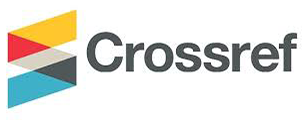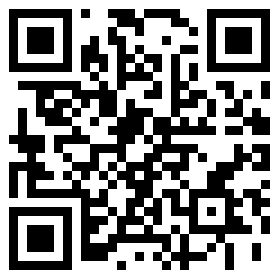Studi penggunaan PhET Interactive Simulations dalam pembelajaran fisika
Abstract
Abstrak. Artikel ini bertujuan untuk menjelaskan pengunaan PhET Interactive Simulations sebagai pendukung maupun penganti laboratorium real dalam pembelajaran fisika. Adapun topik yang diangkat meliputi apa itu PhET interactive simulation, kegunaan PhET interactive simulation dalam pembelajaran fisika dan pengaruh pengunaan Phet Interactive Simulation dalam pembelajaran fisika dibanding laboratorium Real. Analisis data dilakukan dengan meeduksi data berdasarkan pertanyaan penelitian dan kemudian dilakukan pengkodean sesuai kebutuhan. Berdasarkan hasil studi literatur didapatkan bahwa PhET merupakan sebuah simulasi yang dikembangkan oleh Universitas Colorado yang difokuskan pada pembelajaran fisika yang menekankan korespondensi antara fenomena nyata dan simulasi komputer kemudian menyajikannya dalam model-model konseptual fisis yang mudah dimengerti oleh para peserta didik. Simulasi ini dapat membantu peserta didik maupun peserta didik dalam mengenal topik baru, membangun konsep atau skill, memperkuat ide, menyediakan hasil akhir dan refleksi serta menyediakan visualisasi umum antara peserta didik dan guru. Selain itu juga hasil dari beberapa penelitian menunjukkan bahwa pengunaan PhET memberikan pengaruh yang berbeda dari segi penguasaan konsep, hasil belajar dan kemampuan pemecahan masalah peserta didik, karena PhET dapat menjelaskan konsep yang abstrak dan dalam pengunaannya tidak memerlukan waktu yang banyak.
Kata kunci: PhET, Pembelajaran Fisika
Abstract. This article aims to explain the use of PhET Interactive Simulations as supporters and substitutes for real laboratories in learning physics. The topics raised include what is PhET interactive simulation, the use of PhET interactive simulation in learning physics and the effect of using Phet Interactive Simulation in learning physics compared to the Real laboratory. Data analysis was performed by reducing data based on research questions and then coding them as needed. Based on the results of the literature study it was found that PhET is a simulation developed by the University of Colorado that is focused on learning physics that emphasizes the correspondence between real phenomena and computer simulations and then presents it in physical conceptual models that are easily understood by students. This simulation can help students and students recognize new topics, develop concepts or skills, strengthen ideas, provide final results and reflections and provide general visualization between students and teachers. In addition, the results of several studies indicate that the use of PhET gives different effects in terms of mastery of concepts, learning outcomes and students' problem solving abilities, because PhET can explain abstract concepts and their use does not require a lot of time.
Keywords: PhET, physics learning
Full Text:
PDFReferences
Sherin, B, Common Sense Clarified: The Role of Intuitive Knowledge in Physics Problem Solving, Journal Of Research In Science Teaching, Vol 43, No 6, 2006, pp 533-555.
Docktor & Mestre, Synthesis Of Discipline-Based Education Research In Physics. Phys. Rev. ST. Phys. Educ. Res, Vol 10, No 020119, 2014.
Clement, John, Student Preconceptions In Introductory Mechanics. Am. J. Physics, Vol 50, No 1, 1982, pp 66-10.
Tuminaro, J & Redish, E, Elements of a cognitive model of physics problem solving: Epistemic game. Phys. Rev. ST. Phys. Educ. Res, Vol 3, No 020101, 2007.
Etkina, E, Pedagogical Content Knowledge and Preparation Of High School Physics Teachers. Phys. Rev. ST. Phys. Educ. Res, Vol 6, No 020110, 2010.
Cokc, D. M, Representation Use And Strategy Choice In Physics Problem. Phys. Rev. ST. Phys. Educ. Res, Vol 8, No 020117, 2012.
Bell, T., Urhahne, D., Schanze, S., Plouzhner, R, Collaborative Inquiry Learning: Models, Tools, And Challenges. International Journal of Science Education, Vol 32, No 3, 2010, pp 349-377.
Odom, A.L., Marszalek, J. M., Stoddard, E. R & Wrobel, J. M, Computers and Traditional Teaching Practices: Factors influencing middle level students’ science achievement and attitudes about science. International Journal of Science Education (IJSE), Vol 33, No 17, 2011, pp 2351-2374.
Wieman, C.E., Adam, W. K., Loeblin, P & Perkins, K. K. 2010. Teaching Physics Sing Simulations Phet Simulations.The Physics Teacher, (Online), 8 : 225-227, (http://scitation.aip.org), diakses 17 April 2016.
Moore, E.B., Herzog, T. A & Perkins, K. K, Interactive Simulations As Implicit Support For Guided-Inquiry. Chem. Educ. Res. Pract, vol 14, 2013, pp 257-268.
Zacharia, C.Z & Jong, D.T, One Speciï¬c Advantage For Virtual Laboratories That May Support The Acquisition Of Conceptual Knowledge Is That Reality Can Be Adapted To Serve The Learning Process. Reality Can Be Simpliï¬ed By Taking Out Details, Cognition and Instruction, Vol 32, No 2, 2014, pp 101-158.
Farrokhnia, M.R & Esmailpour, A, A Study on The Impact of Real, Virtual and Comprehensive Experimenting on Stdents’ Conceptual Understanding of DC Electric Circuits and Their Skills in Undergraduate Electricity Laboratory. Procedia Sosola and Behavioral Science, Vol 2, 2010, pp 5474-5482.
Martinez, G., Naranjo, F. L., Perez, A. L & Suero, M. I, Comparative Study Of The Effectiveness Of Three Learning Environments: Hyper-Realistic Virtual Simulations, Traditional Schematic Simulations And Traditional Laboratory, Phys. Rev. ST. Phys. Educ. Res, Vol 7, No 020111, 2011.
Okimustava., Ishafit., Suwondo, N., Resmiyanto, R & Praja, A, Pengembangan Kuliah Eksperimen Fisika dengan Teknologi Multimedia, JRKPF UAD, Vol 1, No 1, 2014, pp 1-4.
Finkelstein, N.D., Adam, W. K., Keller, C. J., Kohl, P. B., Perkins, K. K.,Podolefsky, N. S., Reid, S, When Learning About The Real World Is Better Done Virtually: A Study Of Substituting Computer Simulations For Laboratory Equipment. Phys. Rev. ST. Phys. Educ. Res, Vol 1, No 010103, 2005.
Perkins,K,. Adam, W., Dubson, M., Finkeilstein, N., Reid, S., Wieman, C, Lemaster, R, PhET: Interactive Simulations for Teaching and Learning Physics, The Physics Teacher, Vol 44, 2006, pp 18-23.
Adams,W.K, Student Engagement And Learning With Phet Interactive Simulations, US : Department of Physics University of Colorado, 2010.
Rehn, D. A., Moore, E. B., Podolefsky, N. S & Fineilstein, N. D, Tools For High-Tech Tool Use: A Framework And Heuristics For UsingInteractive Simulations. Journal of Teaching and Learning with Technology, Vol 2, No 1, 2013, pp 31-55.
Podolefsky, N.S., Perkins, K.K & Adams, W.K, Factors Promoting Engaged explorations with Computer Simulations.Phys. Rev. ST. Phys. Educ. Res, Vol 6, No 020117, 2010.
Ajredini, F., Izairi, N., Zajkov, O, Real Experiments versus Phet Simulations for Better High-School StudentsUnderstanding of Electrostatic Charging, European Journal of Physics Education, Vol 5, No 1, 2013, pp 59-70.
DOI: http://dx.doi.org/10.12928/jrkpf.v6i2.14202
Refbacks
- There are currently no refbacks.
Copyright (c) 2019 Cicyn Riantoni, Astalini Astalini, Darmaji Darmaji
Jurnal Riset dan Kajian Pendidikan Fisika | Journal of Research and Physics Education Studies
Kampus 4 Universitas Ahmad Dahlan
Jl. Kolektor Ring Road Selatan, Tamanan, Banguntapan, Bantul, Daerah Istimewa Yogyakarta
Telp. (0274) 563515, ext. 43514; Fax. (0274) 564604, Hp. +62822 3634 7674
Email: jrkpf@pfis.uad.ac.id
e-ISSN: 2355-620X
This work is licensed under a Creative Commons Attribution-NonCommercial 4.0 International License
Best viewed on Mozilla Firefox at screen resolution 1366 x 768 pixels.
View My Stats







